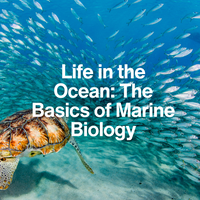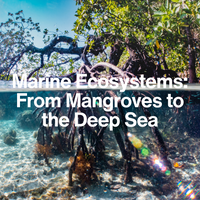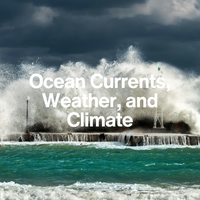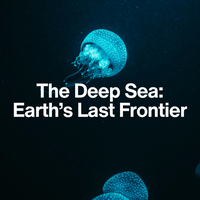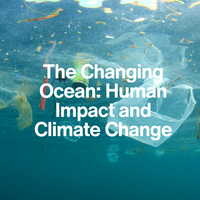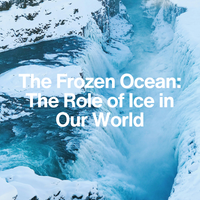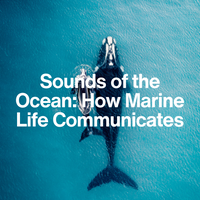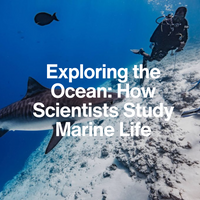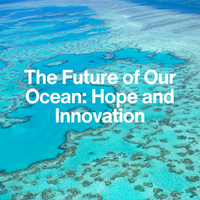LESSON 4
The Role of Submarines and ROVs in Deep-Sea Exploration

Introduction:
Into the Abyss
More people have walked on the Moon than have visited the deepest parts of the ocean. Beneath 200 metres—the reach of sunlight—lies a vast, cold, dark world known as the deep sea. It’s one of the most mysterious and least explored places on Earth.
In this lesson, we’ll explore how scientists use submarines, remotely operated vehicles (ROVs), and autonomous robots to study deep-sea ecosystems. From discovering alien-like life forms to exploring sunken shipwrecks, these technologies are changing what we know about the ocean’s most extreme environments.
1. Why the Deep Sea Matters
The deep sea may be dark, but it’s not empty.
In fact:
- Makes up over 90% of the ocean’s volume
- Hosts incredible biodiversity, including many species found nowhere else
- Plays a key role in carbon storage, climate regulation, and nutrient cycling
- Contains hydrothermal vents, cold seeps, and deep-sea coral gardens—entire ecosystems that thrive without sunlight
Yet we’ve explored less than 0.05% of this region in detail. To go deeper, we need machines that can withstand crushing pressure, complete darkness, and freezing temperatures.

2. Human-Occupied Submersibles (Submarines)
Submersibles are small, pressurised vehicles that carry people deep underwater—often to depths of 1,000 metres or more.
Equipped with:
- Thick titanium or carbon-fibre hulls to withstand extreme pressure
- External lights and cameras to illuminate and record the environment
- Robotic arms for collecting samples or conducting repairs

Did you know?
DSV Limiting Factor, part of the Five Deeps Expedition, became the first sub to reach the deepest point in every ocean.
3. Remotely Operated Vehicles (ROVs): Tethered, Tough, and Precise
ROVs are uncrewed, underwater robots controlled by a team at the surface. They’re connected to a ship via a long cable that transmits power, video, and commands.
ROVs are widely used because they:
- Can stay underwater for hours or even days
- Operate at great depths, even beyond human-rated submersibles
- Carry cameras, sonar, lights, manipulator arms, and sample collectors
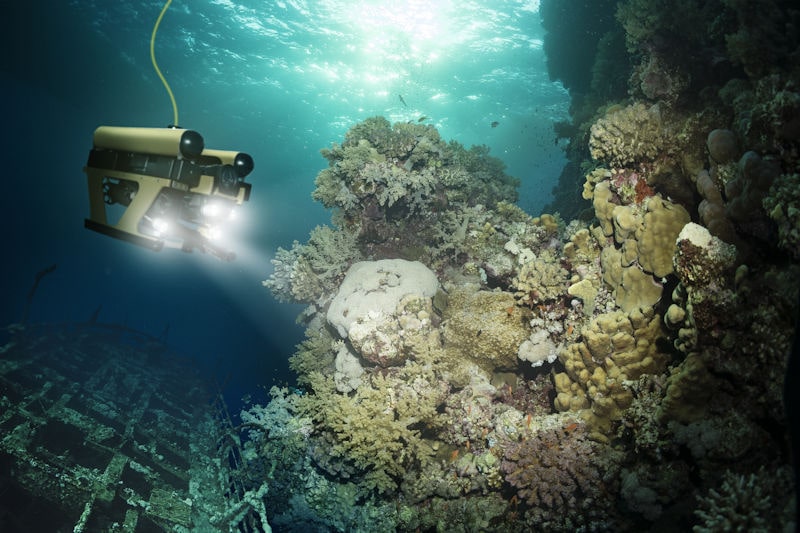
Did you know?
The ROV Jason has explored the Mid-Atlantic Ridge and helped scientists map active hydrothermal vents where unique bacterial life thrives.
4. Autonomous Underwater Vehicles (AUVs): The Ocean’s Drones
AUVs are untethered, self-guiding underwater robots that follow pre-programmed routes—like aerial drones, but underwater.
They’re ideal for:
- Mapping the seafloor in high detail
- Collecting temperature, salinity, and oxygen data
- Conducting long-term surveys in areas where ships can’t always stay
Unlike ROVs, AUVs are usually smaller and more mobile. They “wake up,” carry out their mission, and return to a ship or station for data upload.

Did you know?
The AUV Boaty McBoatface (yes, that’s its real name!) has helped researchers study deep currents in the Southern Ocean linked to climate change.
5. What We’re Discovering in the Deep
Thanks to subs, ROVs, and AUVs, we’re uncovering:
Each mission reminds us that the deep sea isn’t just important—it’s also incredibly vulnerable.
Conclusion
Technology Meets Discovery
Deep-sea exploration is a perfect blend of curiosity and technology. Thanks to submarines, ROVs, and AUVs, we’re finally unlocking the secrets of the planet’s largest and most mysterious environment.
These machines act as our eyes, hands, and sensors, giving us access to places we can’t reach ourselves. And what we’re learning has big implications—for conservation, climate science, and our understanding of life on Earth.
The ocean’s greatest discoveries may still lie ahead—in the darkness, waiting to be seen.
Key Takeaways:
Human-occupied submersibles allow direct observation of deep-sea life and vents.
ROVs are tethered robots used for long, deep missions with cameras and sample tools.
AUVs are untethered, pre-programmed vehicles used to map and survey remote regions.
These technologies are revealing new species, ecosystems, and threats—and helping protect them.
NEXT LESSON
How Can We Predict the Future of Our Ocean?
In our final lesson of the bloc, we’ll explore how ocean scientists use models, data, and forecasting tools to understand where the ocean is heading—and how we can prepare.






